Walking along El Sol Avenue, Cusco’s main thoroughfare, you’ll encounter a bustling hub of pharmacies, convenience stores, banks, currency exchange offices, travel agencies, phone shops, shoe stores, and artisan centers. This avenue leads to an expansive garden that glows under the Sun daily and dazzles with spectacular lighting at night. In Inca times, these gardens were akin to a paradise, adorned with solid gold statues shaped like animals and corn cobs, shimmering to the enchanting rhythm of sophisticated water fountains. To the Incas, gold symbolized the sweat of the Sun. Looking up, you’ll see Cusco’s most iconic temple—a central economic and spiritual site of the Inca Empire: Qoricancha! Majestic and monumental, its grandeur speaks volumes about its importance.
- A Glimpse into Qoricancha’s History
- Qoricancha Today: What to See?
- Temple of the Sun
- Temple of the Moon
- Temple of Venus and the Stars
- Temple of the Rainbow (K’uychi)
- Temple of Lightning, Thunder, and Thunderbolt (Illapa or Chuqi Illapa)
- The Solar Garden
- Plaza of the Plain of the Sun
- You May Be Interested In:
Despite being looted and nearly destroyed during the Spanish invasion, this temple has withstood three major earthquakes and remains one of the city’s most historically significant attractions. Research attributes its resilience to the solid calcite and andesite stone walls, a marvel of intricate Inca engineering. It’s undeniably a must-see, deserving a spot on your journey through the “Sacred Land of the Incas.” In this blog, we invite you on an imaginary journey back to the Inca era, exploring the mysterious chambers that guard this priceless historical treasure. After reading, we’re sure you’ll be eager to visit in person!
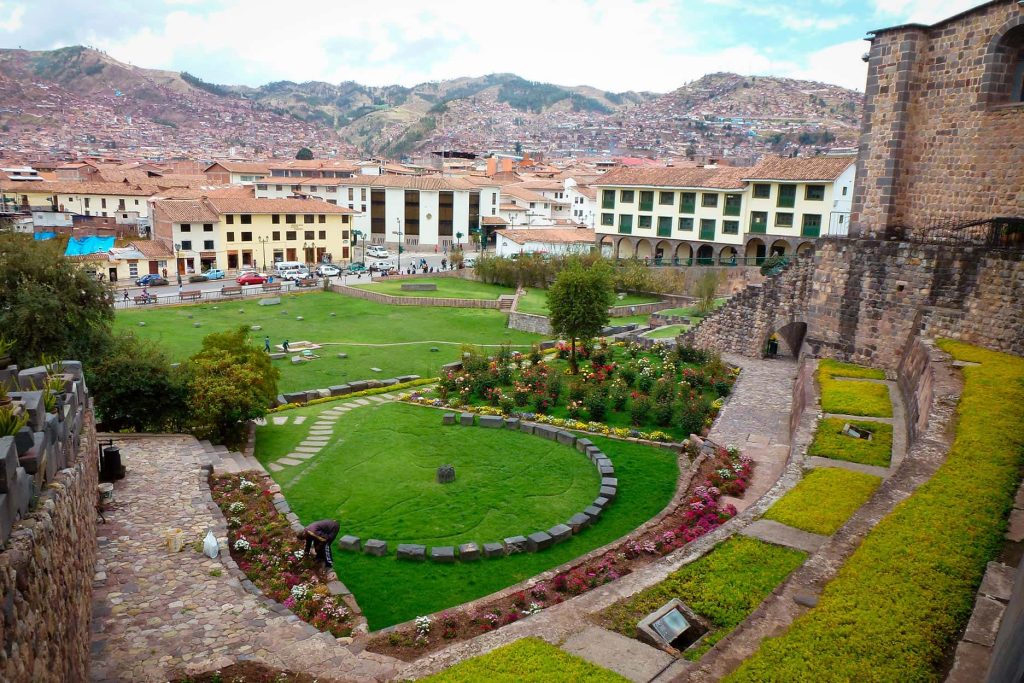
A Glimpse into Qoricancha’s History
Did you know that the Incas worshiped the Sun as a deity? Inti, or Apu Inti, was regarded as the Sun god and the most revered divinity of the Inca Empire. Honored in various sanctuaries, Inti received offerings of gold and silver and was served by the “Virgins of the Sun.” Numerous sacrifices were made in his name, reflecting the profound devotion of the Incas. Inti ruled the celestial realm, while the emperor, known as the “Son of Inti,” governed humanity on Earth.
Based on this belief, Inca Wiracocha commissioned a significant temple in 1200 AD, constructed by Cusco’s original inhabitants, the Ayamarcas. This religious site, named Inticancha or Intiwasi, was strategically located in the capital of the Inca Empire, Cusco, Peru. Beyond serving as a place of worship, the temple housed the mummified remains of Inca emperors.
Under Pachacutec’s reign, the temple walls were adorned with gold, silver, and precious stones. Smaller walls were erected around it, connected by a continuous three-meter-tall band of pure gold. Even the cords securing the thatched roof were made of gold. The temple’s walls, built from impeccably joined natural stones, were designed to reflect the sophistication of the ceremonies held in honor of the Sun god. During these rituals, attendees fasted, walked barefoot, and carried heavy burdens on their backs as signs of humility, reverence, and devotion.

Qoricancha Today: What to See?
Welcome to Qoricancha, traveler! As you step inside, remember the cultural significance of this sacred site for the Inca legacy. Here, you’ll have the chance to explore temples dedicated to the gods of the Sun (Inti), Moon (Mama Killa), Lightning (Illapa), Rainbow (K’uychi), and Stars (Ch’aska), among others—Marvel at the mysterious constructions and historical treasures that adorn the temple’s walls and chambers.
Location: Qoricancha is in central Cusco at El Sol Avenue and Santo Domingo Street, just two blocks from the Plaza de Armas.
Opening Hours:
- Monday to Saturday: 8:30 a.m. – 5:30 p.m.
- Sunday: 2:00 p.m. – 5:00 p.m.
Entrance Fee:
Admission to Qoricancha is separate from the Cusco Tourist Ticket (BTC). The entrance fee is 15 soles (approximately USD 4) for adults and eight soles for students.
However, entry to the Qoricancha Site Museum is included in the BTC, granting access to the gardens via a staircase leading directly to them.
The entrance to the Qoricancha Site Museum is included in the Cusco Tourist Ticket (BTC). It will automatically entitle you to the Qoricancha Gardens, accessed by a staircase leading directly to them.

Temple of the Sun
Imagine stepping into the hall of the Temple of the Sun, known in Quechua as Inti Kancha—a sacred space dedicated to the Sun god and one of the most revered sites of the Inca Empire. This hall was the spiritual heart of the temple, occupying over half of the current Santo Domingo Church area. According to the famous Lake Titicaca legend, research suggests that this hall housed the legendary gold disc that was said to have been given to Wiracocha by the Sun god. It also contained the “Sons of the Sun” embalmed bodies,” arranged by age on golden seats, surrounded by golden relics that once covered the entire temple.
Location: The temple is situated on the western end, corresponding to the current drum of the church, overlooking El Sol Avenue. Its eastern edge extended to the present atrium of the church.
Temple Features
Construction and Architecture
- Built with finely carved stone blocks that fit together inexplicably without using mortar, the Qorikancha is a remarkable example of Inca engineering. Some studies even suggest the involvement of an extraterrestrial civilization.
- Its walls were once covered with sheets of pure gold, symbolizing the radiance and power of the Sun, though these were looted during the Spanish conquest.
. Religious Function
- The Qorikancha was a place of worship dedicated to the Sun God (Inti), the primary deity in Inca cosmology.
- During solstices, sunlight would pass through strategically aligned windows, illuminating the chamber.
Transformation During the Colonial Period
- After the arrival of the Spanish, the Qorikancha was partially destroyed, and the Santo Domingo Convent was built on its foundations, as it stands today.
- Despite the modifications, the original parts of the temple, including the main hall, have withstood the test of time and remain a fascinating attraction.
Significance: The Temple of the Sun reflects the Incas’ deep connection with the Sun. It is a site of great historical importance, showcasing the Inca past’s magnificence and sophisticated engineering.
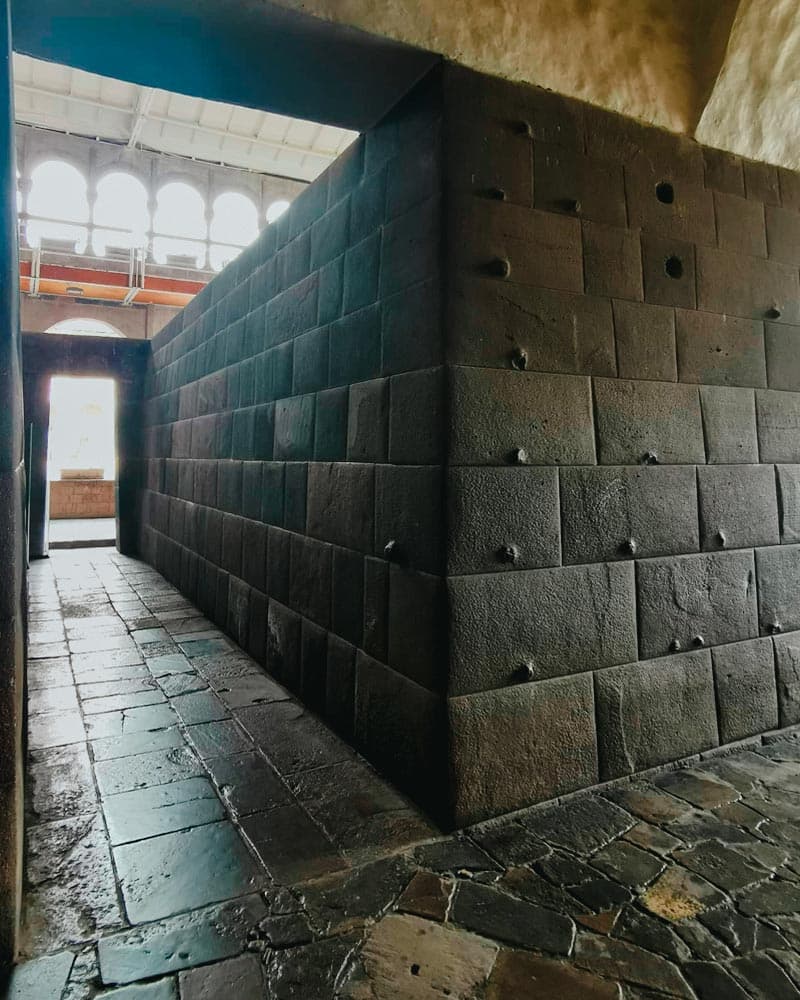
Temple of the Moon
Located near the Temple of the Sun, this space was dedicated to worshiping the Moon (Mama Killa), considered an essential element of Andean cosmology and the wife of the Sun God (Inti).
The temple, beautifully adorned with silver elements and a silver depiction of the moon, housed the mummies of the Coyas (wives of the Inca), arranged according to their seniority. Unfortunately, much of this temple was demolished by the Spanish to construct the nave of the Santo Domingo Church.
Location: Found on the western side of the Qorikancha’s inner courtyard.
The Importance of the Moon in Inca Cosmology
- Mama Killa was revered as the protector of women and regulator of the lunar calendar, which was crucial for agriculture.
- Lunar phases guided planting and harvesting cycles, religious festivals, and fertility rituals.
- The temple served as a center for worship and ceremonies led by priestesses known as acllas or “chosen ones of the Sun.”
Polished Stone Walls:
Like other parts of the Qorikancha, the Temple of the Moon was distinguished by its perfectly fitted stone walls, showcasing Inca architectural skill.
Volcanic stones used in construction emphasized harmony between the building and nature.
Astronomical Alignment:
The temple’s design aligned with the moon’s movements, allowing celestial observations and astronomical predictions.
Original Decoration:
During the Inca period, the temple was adorned with silver sheets symbolizing lunar light, which was associated with purity and divine connection.
Significance: The Temple of the Moon embodies the cultural and spiritual importance of the moon, highlighting the Inca’s ability to harmonize spirituality, science, and architecture with the cosmos.
Temple of Venus and the Stars
This temple, located near the Temple of the Moon and separated only by an alleyway, was one of the most fascinating structures dedicated to worshipping Venus and other stars. The stars were considered daughters of the Incas and servants of the moon. Studies suggest the Inca would remain in this temple to receive blessings during ceremonies and witness sacrifices performed in the rectangular courtyard.
Location: On the western side of the Qorikancha’s inner courtyard.
The Importance of Venus and the Stars for the Incas
- Venus, known as Ch’aska, was regarded as a guiding star. Its appearance in the sky marked significant events, such as the start of agricultural cycles and religious celebrations.
- Stars (Coyllur) were seen as divine entities connected to significant deities and the cosmic organization of the universe.
- The Incas used constellations, including those formed by bright stars and “shadows” in the Milky Way, to orient their daily lives and predict natural cycles.
Characteristics of the Temple of Venus and the Stars
Architecture and Decoration:
- The temple walls were crafted from finely polished stones with perfect joints, a hallmark of Inca architecture. Studies suggest they may have been adorned with silver to symbolize starlight.
- Inside, niches or specific spaces may have been used to align with starlight during certain times of the year.
Celestial Observation:
- The temple also functioned as an astronomical observatory, allowing Inca priests to study the movements of Venus and the stars. These observations were used to create agricultural calendars and plan religious festivals.
Ceremonial Function:
- Ceremonies and offerings were held to ensure good harvests and harmony between the heavens and the Earth. Coca leaves, textiles, and precious objects were offered in honor of stellar deities.
Significance: The Temple of Venus and the Stars demonstrates the Incas’ profound connection to the cosmos and their use of the heavens to guide their lives, agriculture, and spirituality. It remains a testament to their ancestral wisdom, which fascinates scholars and travelers alike.
Temple of the Rainbow (K’uychi)
This temple was dedicated to worshiping the Rainbow (K’uychi), a natural element that the Incas regarded as a divine symbol of connection between worlds and a direct manifestation of the Sun’s (Inti) power and natural forces.
Unfortunately, part of this temple was demolished during the construction of the Santo Domingo Convent.
Location: North of the Temple of Illapa and facing the Temple of the Moon, on the eastern side of the Qorikancha’s inner courtyard.
The Significance of the Rainbow for the Incas
- The rainbow was a sacred celestial expression, representing the alliance between gods and the Earth.
- For the Incas, it symbolized fertility, harmony, and divine protection over their people and crops.
- Often associated with the Sun God (Inti), the rainbow was believed to bring positive energy and serve as a good omen.
Characteristics of the Temple of the Rainbow
Sacred Architecture:
- Like other Qorikancha structures, the temple was built with perfectly polished stone blocks, showcasing Inca engineering without using mortar.
- Its walls may have been adorned with depictions of the Rainbow God, crafted in gold and silver to reflect sunlight.
Ceremonial Function:
- Ceremonies dedicated to the Rainbow God were performed to attract fertility and prosperity for the empire.
- Inca priests offered coca leaves, food, and textiles in rituals combining spirituality and astronomy.
Natural Observation:
- The temple’s location allowed observation of natural phenomena, such as rainbows after rain, reinforcing the connection between the sacred and climatic events.
Significance:
The Temple of the Rainbow exemplifies the Incas’ deep respect for natural elements and their incorporation of this symbolism into their culture and religion. It reflects the harmony the empire sought between the physical and spiritual worlds, leaving a legacy that inspires visitors worldwide.
Temple of Lightning, Thunder, and Thunderbolt (Illapa or Chuqi Illapa)
One of the most significant temples was the Temple of Lightning, Thunder, and Thunderbolt, which were dedicated to worshipping Illapa, the Inca god of weather. Illapa was considered one of the most influential and revered deities in Andean cosmology, and it was associated with weather phenomena that brought rain and fertility to the land. Illapa, or Chuqi Illapa, simultaneously means Lightning, Thunder, and Thunderbolt.
Location: In front of the Temple of Venus. It features three equidistant, slightly trapezoidal single-jamb doors and a window on each lateral wall.
Who Was Illapa?
- Illapa, also known as Chuqi Illapa (“the one who shoots arrows”), was the god of thunder, lightning, and storms.
- He was depicted as a warrior holding a mace or a bow, symbolizing thunder, while lightning was represented as the arrow shot.
- Illapa was crucial for agricultural communities, as the rain he brought ensured good harvests and the people’s sustenance.
Characteristics of the Temple of Lightning, Thunder, and Thunderbolt
Construction and Symbolism
- The temple was adorned with polished stones and symbols related to the forces of nature, such as lightning bolts and storm-like shapes.
- Studies suggest the temple walls may have been covered in gold and silver, symbolizing Illapa’s power to balance the sky and earth.
Religious Function
- The Temple of Lightning was where priests performed rituals to invoke rain, protect crops from destructive storms, and express gratitude for the land’s fertility.
- Offerings like coca leaves, textiles, and small figurines were commonly used in ceremonies held at the temple.
Natural Alignment
- The space was designed to align with seasonal weather events. Specific windows or niches were said to allow light to enter during storms, reinforcing the connection to Illapa.
Significance
The Temple of Lightning, Thunder, and Thunderbolt is a remarkable example of the Incas’ profound relationship with natural phenomena and their spirituality. It reflects their respect and reverence for nature’s power, essential to Andean cosmology.
The Solar Garden
The Solar Garden of the Qoricancha Temple, also known as Inti Kancha, was a sacred extension of the complex dedicated to the Sun god (Inti) at the heart of the Inca Empire. This garden was not merely decorative; it symbolized abundance and divine power in Andean cosmology.
Characteristics of the Solar Garden
Gold and Silver Ornamentation
- The garden was adorned with representations of plants, animals, and agricultural objects made of solid gold and silver, symbolizing the fertility and wealth of the land.
- Among the items were corn cobs, flowers, llamas, and even life-sized shepherds, all crafted with great skill.
Spiritual Symbolism
- The Solar Garden represented the connection between the sky, the earth, and agriculture—foundational pillars of Inca life.
- The golden sculptures were offerings to the Sun, expressing gratitude for harvests and prosperity.
Ceremonial Space
- The garden was used for celebrations and rituals, including ceremonies of gratitude to the Sun and Pachamama (Mother Earth).
- It also served as a space for priests to meditate, strengthening the spiritual bond between humans and the cosmos.
Visiting the Solar Garden Today
Although the original pieces have been lost, the Solar Garden is integral to visiting Qoricancha.
- Recreations and Exhibitions: The Qoricancha Site Museum displays artifacts and models that help visitors imagine the garden’s opulence and significance.
- Historical Reflection: The site serves as a reminder of the cultural and spiritual splendor of the Inca people.
Significance: The Qoricancha Solar Garden is a testimony to the splendor of the Andean past, inviting visitors to explore the cultural riches that shaped the Inca Empire and that still live on in the memory of the Peruvian people.
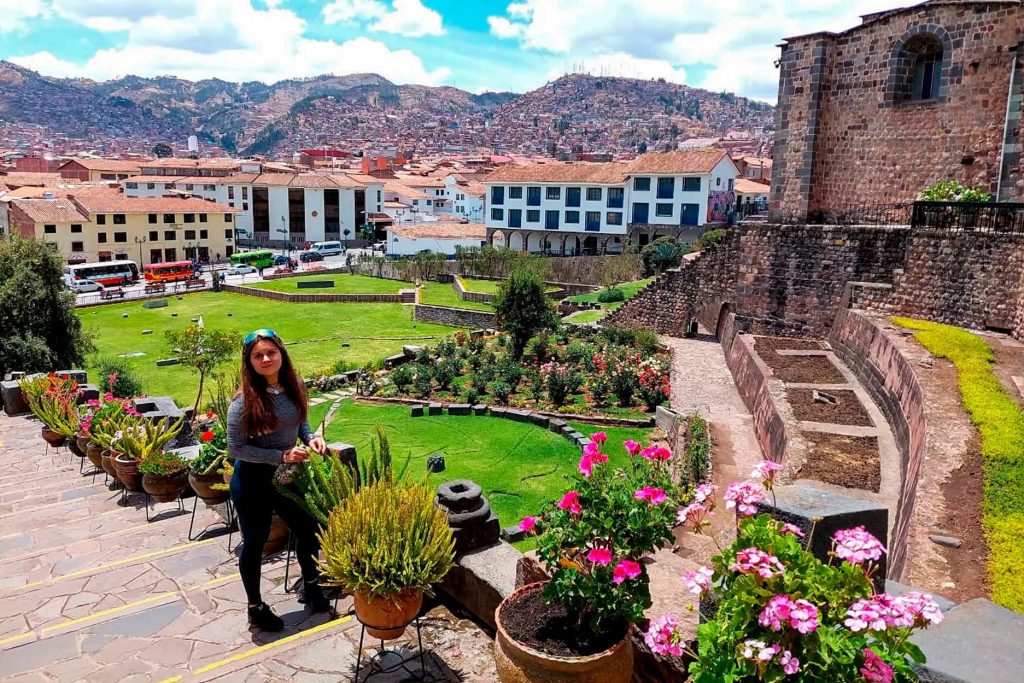
The Fountains of the Solar Garden
The fountains are among the most fascinating features of the Solar Garden. They played a central role in rituals and organizing the sacred space dedicated to the Sun (Inti), showcasing the Incas’ ingenuity in water management and their deep spiritual connection to water.
Characteristics of the Fountains
Advanced Hydraulic Engineering
- The fountains were constructed with a complex system of channels and aqueducts carved in stone.
- Water was sourced from natural springs and evenly distributed to the fountains, maintaining a constant and symbolic flow.
Spiritual Significance
- Water symbolized life, purification, and the connection between the terrestrial, celestial, and subterranean worlds—critical concepts in Andean cosmology.
- Religious rituals often included water as a purifying element and an offering to the gods, especially the Sun and Pachamama.
Architecture and Aesthetics
- The fountains were precisely sculpted, reflecting the Incas’ skill in working stone and creating structures harmonious with nature.
- Some fountains were decorated with geometric patterns or religious symbols, emphasizing their ceremonial purpose.
The function of the Fountains
- The fountains were part of the Solar Garden, which included golden representations of plants and animals.
- They were used in religious ceremonies and celebrations of gratitude to the Sun, particularly during festivals like Inti Raymi.
Fountains Today
Visitors can admire the restored fountains within the Qoricancha Complex, which are preserved as part of the Inca legacy. Although the original water flow has been interrupted in some areas due to historical changes, the design and function of the fountains continue to impress with their sophistication.
The Qoricancha fountains are not just architectural marvels; they tell a story of reverence for nature, spiritual harmony, and the extraordinary technical mastery of the Incas.
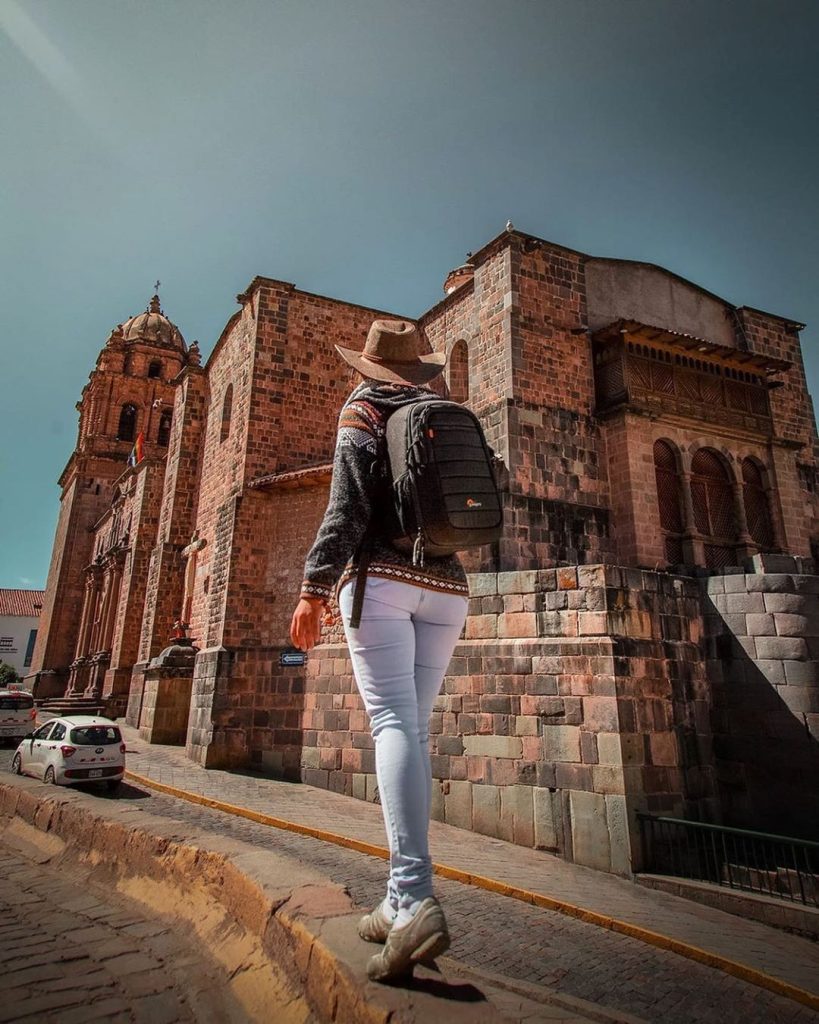
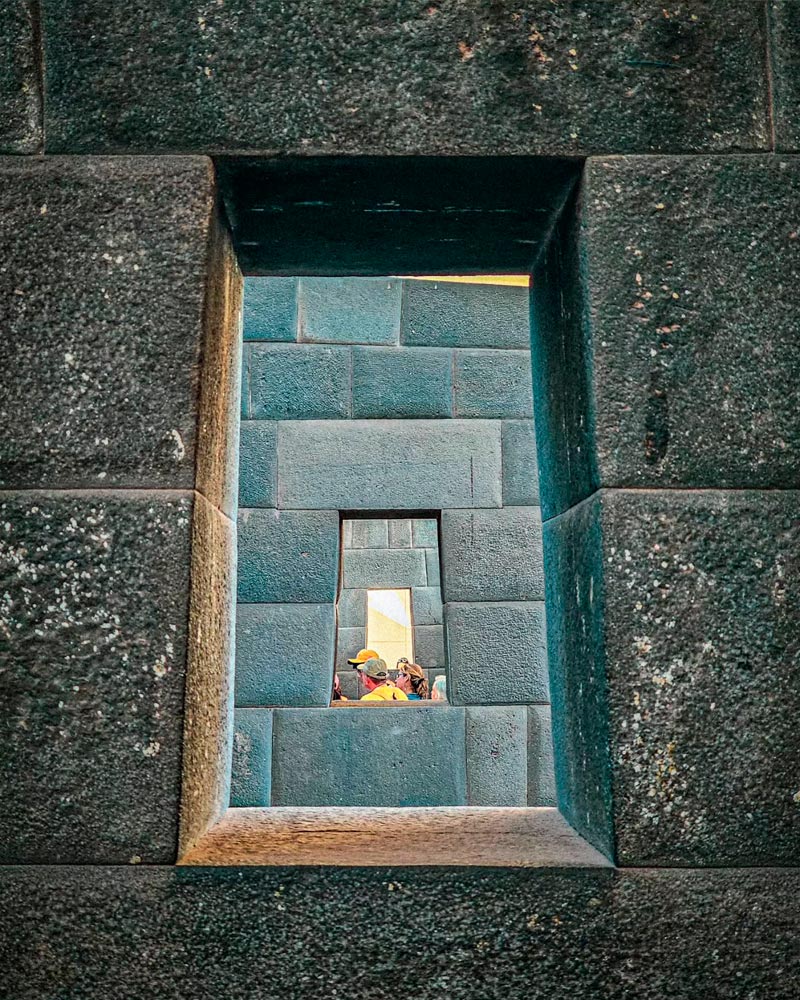
Plaza of the Plain of the Sun
The Plaza of the Plain of the Sun was a central space of great spiritual and cultural significance for the Inca Empire. This area, known in Quechua as Intipanpa, served as a ceremonial site and a gathering place for important events related to the Sun cult, symbolizing power and the divine connection between the Sun (Inti) and the earth.
Location:
It is situated north of what was Qoricancha. Today, it corresponds to the Plaza de Santo Domingo, with its boundaries and size seemingly unchanged.
The Plaza of the Plain of the Sun exemplifies how the Incas valued and integrated nature and celestial bodies into their daily lives, using architectural spaces to reinforce their beliefs and celebrate their connection with the universe.

Don’t Miss the Qoricancha, the Qoricancha Gardens, and the Qoricancha Site Museum. Discover the hidden magic of the most important temple of the Inca Empire. Additionally, the city offers many enjoyable and nearby excursions, ideal for visitors looking to acclimatize properly. One excellent recommendation is the City Tour Salkantay Trekking.












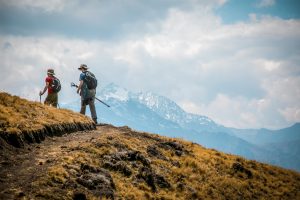

Leave A Reply